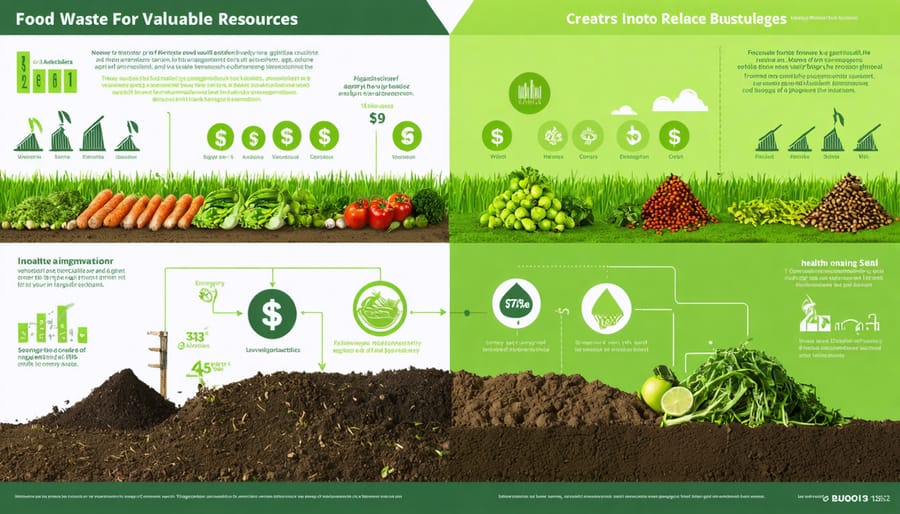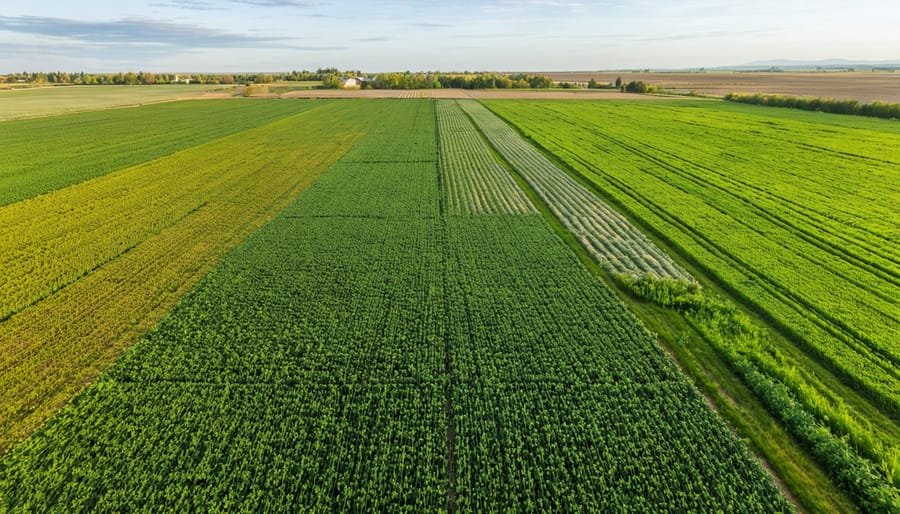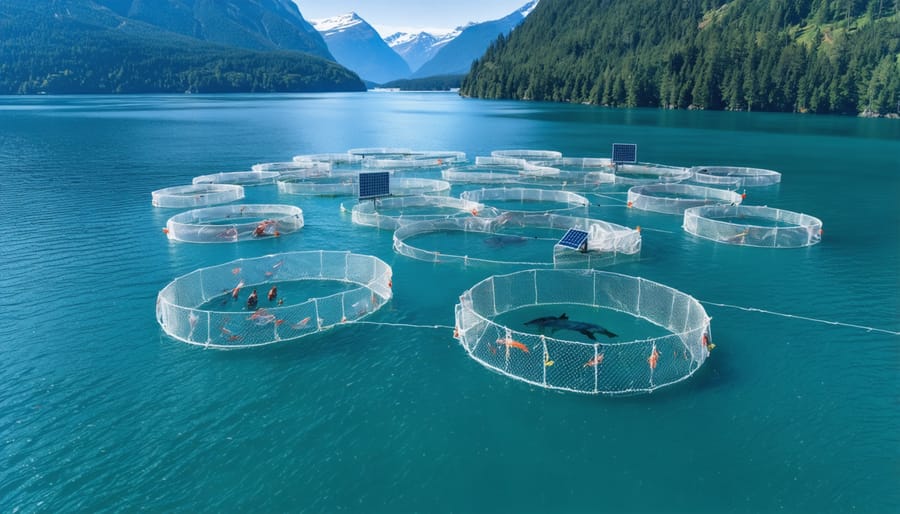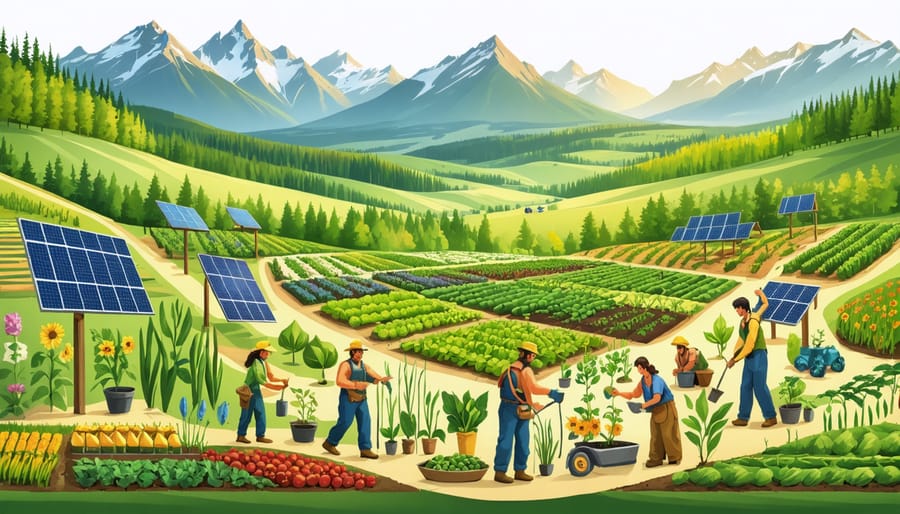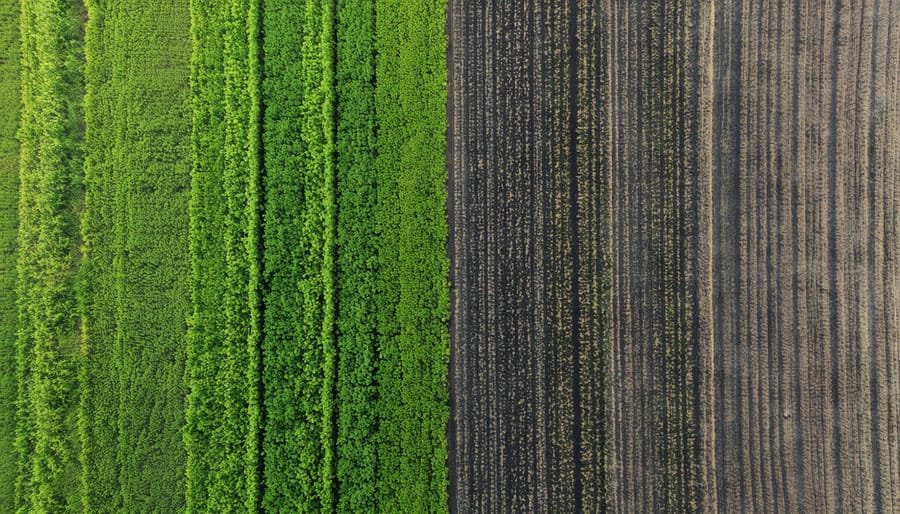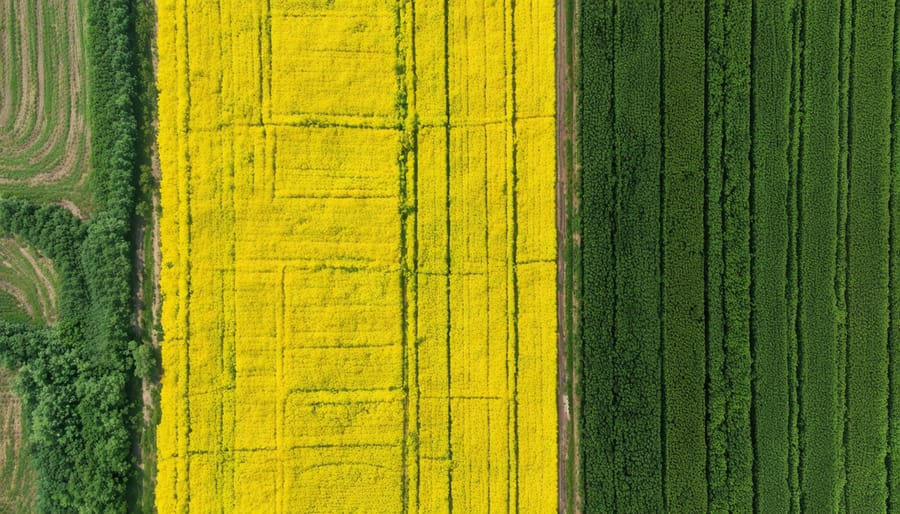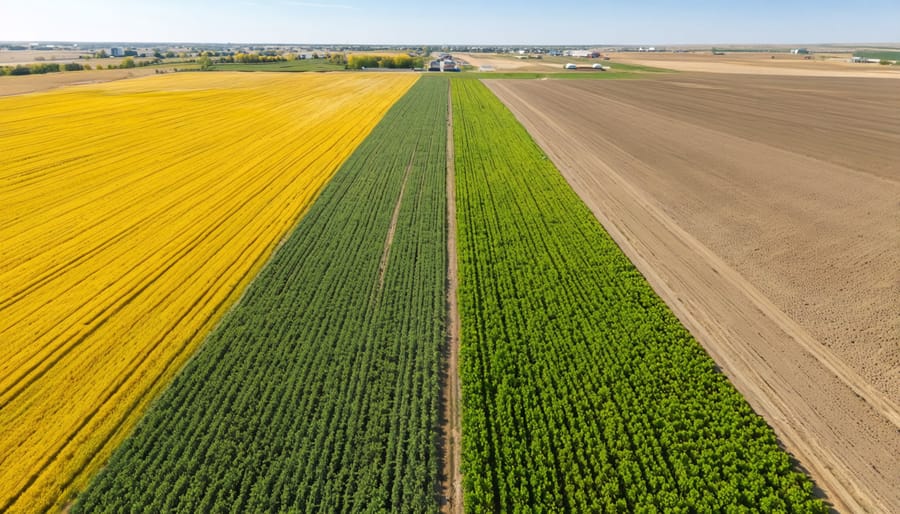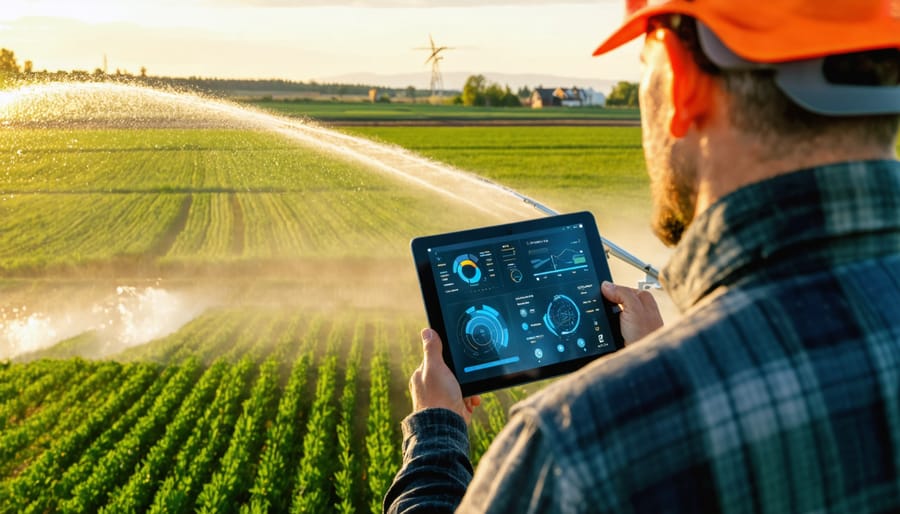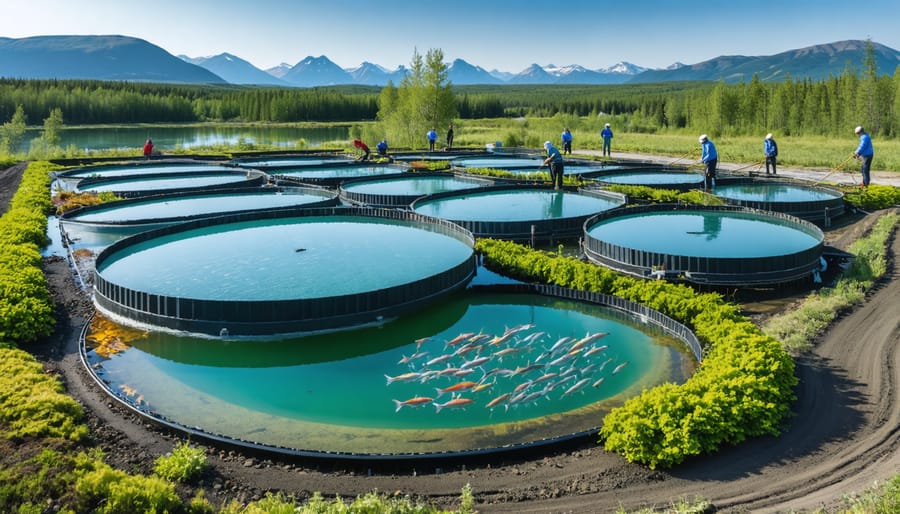Transform agricultural waste into valuable resources through integrated food waste reduction systems that boost both environmental sustainability and farm profitability. Across Alberta’s diverse farming landscape, innovative waste management practices consistently reduce operating costs by 15-30% while creating new revenue streams through composting and biogas production. Canadian farmers implementing comprehensive food waste strategies report significant improvements in soil health, reduced greenhouse gas emissions, and strengthened community relationships through local food recovery programs. Recent data from Agriculture and Agri-Food Canada reveals that effective on-farm waste management can recover up to 85% of previously discarded organic materials, transforming potential waste into valuable agricultural inputs or marketable products. By adopting smart storage solutions, implementing precision harvesting techniques, and establishing strong connections with local food banks and processors, Alberta farmers are pioneering a new era of agricultural efficiency where waste reduction directly translates to increased farm resilience and economic growth.
The Real Cost of Food Waste on Alberta Farms
Financial Impact Assessment
The financial burden of food waste on Canadian farms amounts to approximately $2,300 per hectare annually, considering both direct product losses and associated operational costs. For a typical Alberta farm operation, this translates to significant expenses in labour, storage, and disposal fees.
Direct costs include the immediate value of unsold or spoiled produce, estimated at 15-20% of total production. Storage costs for excess inventory can reach $175 per tonne, while transportation and disposal fees add another $80-120 per load. Labour costs associated with handling waste product typically account for 5-8% of total workforce expenses.
Indirect costs are equally impactful, including increased energy consumption for cooling systems, additional packaging materials, and environmental compliance fees. These hidden expenses often represent 25-30% of total waste management costs.
However, farms implementing effective waste reduction strategies report savings of up to $1,800 per hectare annually. Local success stories show that investing in proper storage facilities and implementing precise inventory management systems can reduce waste-related expenses by 40% within the first year of implementation.

Environmental Footprint
The impact of food waste on our environment extends far beyond the farm gate. Here in Alberta, we generate approximately 2.4 million tonnes of organic waste annually, contributing significantly to greenhouse gas emissions. When food waste decomposes in landfills, it produces methane, a greenhouse gas 25 times more potent than carbon dioxide.
Consider this: every tonne of food waste prevented represents about 4.2 tonnes of CO2 equivalent emissions avoided. For the average grain farm in central Alberta, implementing proper storage and handling practices can prevent losses of up to 15% of harvested crops, translating to substantial emissions reductions.
Beyond emissions, food waste strains our water resources. Growing crops that ultimately go to waste uses roughly 23% of Canada’s agricultural water consumption. For Alberta farmers, this means precious irrigation water and rainfall are being used to grow food that never reaches a plate.
The good news is that by reducing waste, we’re not just helping the environment – we’re protecting our resources and improving farm efficiency. Many local farmers have found that implementing waste reduction strategies has led to both environmental and economic benefits.
Practical On-Farm Waste Prevention Strategies
Pre-Harvest Management
Effective pre-harvest management is crucial for reducing food waste before it even begins. By implementing sustainable farming practices, Alberta farmers can significantly minimize losses while optimizing crop yields.
Start with precise crop planning by analyzing historical yield data and market demands. This helps determine optimal planting quantities and reduces the risk of overproduction. Consider implementing succession planting for vegetables, spacing out harvests to match market needs throughout the season.
Regular field monitoring is essential. Scout for pests, diseases, and nutrient deficiencies at least weekly during critical growth stages. Early detection allows for timely intervention, preventing crop losses. Modern tools like soil moisture sensors and weather stations can help make informed decisions about irrigation and pest management.
Proper equipment maintenance is often overlooked but crucial. Ensure harvesting machinery is well-calibrated and maintained to minimize mechanical damage to crops. Consider investing in precision agriculture technology to improve accuracy in planting and resource application.
Building strong relationships with buyers before harvest helps secure markets for your produce. Many successful Alberta farmers work with multiple marketing channels, including farmers’ markets, CSA programs, and local food processors, to ensure various outlets for different crop grades.
For weather-sensitive crops, consider protective measures like row covers or hoop houses. These structures can shield crops from extreme weather events and extend the growing season, providing more flexibility in harvest timing.
Remember to document all pre-harvest activities and outcomes. This information becomes valuable for future planning and continuous improvement of waste reduction strategies.
Post-Harvest Handling
Proper post-harvest handling can make the difference between profitable operations and significant losses. Here in Alberta, where temperature fluctuations can be extreme, implementing effective storage and transportation practices is crucial for maintaining crop quality and reducing waste.
Start by cooling your produce immediately after harvest – this simple step can extend shelf life by up to 50%. For root vegetables like potatoes and carrots, maintain storage temperatures between 4-10°C with relative humidity around 90-95%. Grains should be dried to 13-14% moisture content before storage to prevent mold growth.
When it comes to transportation, use clean, well-ventilated vehicles and containers. Consider investing in temperature-controlled transport for sensitive crops, especially during our hot summers and frigid winters. Local farmer Dave Thompson from Lacombe shares, “We reduced our transport losses by 30% simply by adding insulation blankets to our delivery trucks.”
Storage facilities should be regularly inspected for pest activity, moisture issues, and temperature consistency. Install monitoring systems to track these conditions and receive alerts when parameters fall outside acceptable ranges. Many Alberta farmers are now using smart storage solutions that automatically adjust ventilation based on outside temperatures.
Remember the First-In-First-Out (FIFO) principle for inventory management. Keep detailed records of harvest dates and storage conditions – this information is invaluable for tracking quality and optimizing your storage practices over time.
For perishable products, consider partnering with local food banks or processors to utilize produce that doesn’t meet market standards but is still perfectly edible. This approach not only reduces waste but also strengthens community relationships.

Value-Added Opportunities in Waste Management

Composting and Soil Enhancement
Converting food waste into nutrient-rich compost represents one of the most sustainable and cost-effective ways to manage agricultural by-products while improving soil health. Alberta farmers have increasingly adopted innovative soil enhancement techniques through composting, seeing remarkable improvements in soil structure and crop yields.
The process begins by collecting organic waste materials, including crop residues, spoiled produce, and livestock manure. These materials are layered in specific ratios – typically three parts carbon-rich materials (like straw or dried leaves) to one part nitrogen-rich materials (such as fresh grass clippings or food scraps). Maintaining proper moisture levels around 50-60% and regular turning ensures optimal decomposition.
Many Alberta farmers have found success using windrow composting, where materials are arranged in long rows about 1.5 metres high and 2.5 metres wide. This method works particularly well in our climate, allowing for efficient management of larger volumes of organic waste.
The finished compost, typically ready in 3-6 months depending on conditions, provides multiple benefits: improved soil water retention, enhanced nutrient availability, and increased biological activity. Local success stories show that farms implementing regular composting programs have reduced their synthetic fertilizer use by up to 30% while maintaining or improving yields.
Remember to monitor your compost pile’s temperature, which should reach 55-65°C to ensure proper decomposition and eliminate potential pathogens. Regular testing of finished compost helps ensure it meets quality standards before field application.
Alternative Markets
When your produce doesn’t meet traditional market standards, there’s still significant value to be captured through alternative markets. Many Alberta farmers have found success working with food processors who transform “imperfect” vegetables into soups, sauces, and pre-cut offerings. Local juice companies, for instance, regularly partner with farmers to purchase fruits and vegetables that may not meet cosmetic standards for fresh market sales.
Food banks and community organizations across the province also welcome agricultural donations, offering tax receipts that can help offset production costs. The Calgary Food Bank’s Farm to Food Bank program has created lasting partnerships with local producers, ensuring that quality produce reaches families in need while reducing on-farm waste.
Value-added processing presents another opportunity. Consider converting excess produce into shelf-stable products like jams, pickles, or dried goods. Several small-scale food processors in Alberta offer co-packing services, allowing farmers to create their own product lines without significant infrastructure investment.
Animal feed markets provide yet another avenue for crop utilization. Local livestock operations often welcome arrangements to purchase suitable produce that doesn’t meet human consumption standards. Some innovative farmers have even partnered with composting facilities to create premium soil amendments, transforming potential waste into a valuable product for the growing garden market.
Remember to research food safety regulations and handling requirements specific to each alternative market to ensure compliance and maintain product quality.
Community-Based Solutions
Local Partnerships
Building strong partnerships with local food banks and processors is a vital strategy for Alberta farmers looking to minimize waste while supporting their communities. These collaborations create win-win situations, turning potential food waste into valuable resources for local food security initiatives.
Many food banks across Alberta welcome partnerships with farmers, offering structured programs to collect and distribute surplus produce. The Calgary Food Bank, for instance, has developed a streamlined process for accepting fresh farm products, including same-day pickup services during harvest season. Similarly, food processors can transform imperfect produce into value-added products like soups, sauces, or frozen vegetables.
To establish effective partnerships:
– Contact nearby food banks to understand their acceptance criteria and scheduling
– Connect with local processors to explore opportunities for processing grade-B produce
– Document your donations for tax benefits and tracking purposes
– Consider joining existing farmer networks that already have established relationships with these organizations
The Leftovers Foundation in Alberta exemplifies successful partnership models, connecting farmers with both food banks and processors through their rescue program. They’ve helped numerous farms reduce waste while ensuring good food reaches those who need it most.
Remember to start small and build relationships gradually. Many successful partnerships begin with seasonal pilot projects before expanding into year-round collaborations.
Knowledge Sharing Networks
Alberta’s farming community has developed robust networks for sharing knowledge and success stories in waste reduction, proving that collaboration is key to sustainable agriculture. The Southern Alberta Waste Management Exchange, for instance, connects over 200 farms to share best practices and resources, resulting in a 30% reduction in organic waste across participating operations.
Learning from peers has been particularly effective in the Red Deer region, where monthly farmer-to-farmer meetings facilitate discussions on innovative storage solutions and seasonal planning strategies. These gatherings have helped participants reduce produce losses by an average of 25% during peak harvest periods.
The Alberta Food Waste Initiative’s online platform serves as a digital hub where farmers can access case studies, training materials, and connect with mentors who have successfully implemented waste reduction programs. Notable success stories include the Lacombe County cooperative’s gleaning program, which redistributed 50,000 kg of surplus produce to food banks in 2022.
Digital tools like the Alberta Farm Waste Calculator, developed by local agricultural experts, help farmers track and analyze their waste patterns. This data-driven approach has enabled farms to identify specific areas for improvement and measure the economic impact of their waste reduction efforts.
By participating in these knowledge-sharing networks, farmers can avoid common pitfalls, adopt proven solutions, and contribute to a more sustainable agricultural sector in Alberta.
As Alberta farmers, we’re uniquely positioned to make a significant impact on food waste reduction while strengthening our agricultural operations. By implementing the strategies discussed throughout this guide, we can transform waste challenges into opportunities for growth and sustainability.
Remember that every step counts, whether you’re starting with simple measures like improved storage techniques or advancing to comprehensive waste-to-energy systems. The key is to begin where you are and gradually build upon your success. Many of your fellow farmers have already seen remarkable results, with some reporting up to 40% reduction in organic waste and significant cost savings within the first year of implementation.
Consider joining local agricultural networks and sharing your experiences with other farmers. The collective knowledge of our farming community is one of our greatest resources. Programs through Alberta Agriculture and Forestry can provide additional support and guidance as you develop your waste management strategy.
Looking ahead, sustainable waste management isn’t just about environmental stewardship – it’s about securing the future of Canadian agriculture. By taking action today, we’re building more resilient farms, stronger local food systems, and healthier communities for tomorrow.
Let’s work together to make Alberta a leader in agricultural waste reduction. Start with one practice, measure your results, and build from there. Your efforts matter, and they contribute to the larger story of Canadian agricultural innovation and sustainability.

